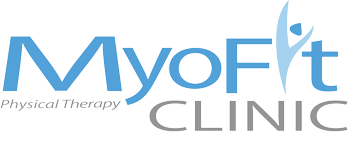By Dr. Adam M. Cramer, PT, DPT
As a Doctor of Physical Therapy, I see a steady stream of patients whose mobility has been compromised either by injury, debilitative conditions such as osteoarthritis, or by an over-fondness for sedentary living.
While some of the conditions that bring people to my clinic are beyond their control, others are a direct result of poor choices and lack of movement and body strengthening over the years. A body that is not maintained tends to break down inevitably. Sooner or later that back pain gets serious, that hurting limb demands to be replaced, or the weakness caused by lack of care just causes a body part to give out.
That’s why when it comes to discussing New Year’s resolutions as another calendar page is turned is a natural topic for me.
I recommend to each patient that they move a little more, and include both cardio and strengthening exercises, both for different reasons.
If you have never run in 40 years and you set your goal to do a full marathon, that might not be realistic or even good for your body either.
The secret is to embrace movement as part of your life and progress gradually in the direction you want to go.
Can-do cardio to get you started
Cardio exercises are designed to strengthen your heart, lungs and blood vessels. In American society, cardio is often seen as synonymous with aerobic exercise.
According to the American College of Sports Medicine1, aerobic exercise helps you burn the most calories each session. You use large muscle groups and must maintain the activity you are doing continuously, and it is rhythmic.
When you do cardio exercises, you will find your breathing is heavy, your heart is pounding, and it is extremely energetic. Running, dancing, cycling, Zumba, and swimming are all popular cardio exercises.
Strengthening exercises to get started
While cardio exercises burn more calories per session, strengthening exercises burn more calories in the long term.
Strengthening exercises include things like lifting weights, stretches, and many gym activities designed to build strength in different limbs and other parts of your body. It is also referred to as anaerobic exercise.
Strengthening exercises help you maintain your body and stay strong. They are designed to build muscle strength and can be extremely beneficial to people who are impacted with back, neck, and limb pain.
When I have patients who really need to lose weight, I tend to recommend strengthening exercises because of how they impact your metabolism. For example, when you lift weights, you actually use higher oxygen levels than cardio to return to your resting state. What that means, as outlined in the 2014 study2 by Larsen, is that your body keeps burning energy long after your exercise period has ended.
The impact of resistance training can actually elevate your basal metabolic rate (BMR) for up to two days following a significant exercise session, according to research3 published in 2018.
How to get started
To start safely, be careful not to overdo it. If you haven’t walked farther than the distance from your parking lot to place of work for years, don’t go out this Saturday and decide to take in a three-mile walk.
Instead, walk around the block.
If you start weight-lifting, start at the lightest level and do that at least a week before you move forward. Overdoing it just leads to injury.
If a part of your body feels intense pain, stop. Likewise stop if you feel nauseous or faint.
Many of my patients say that getting a device like a fitness tracker is a good way to spur them to stay with their exercise habit. Getting a fitness buddy and a supportive friend also helps you stay true to your goal.
Another device is the METS to Calories Calculator5 that you can access from Cornell University’s website: http://www.ergo.human.cornell.edu/MetsCaloriesCalculator/MetsCaloriesCalculator.htm
It’s useful because it calculates the number of calories that you burn by assessing your body weight, activity level and the time expended on your exercise session.
Stick with it!
You do not have to commit endless hours in the gym to make significant changes in your body. Nor do you have to follow the over-zealous who urge you to push through your pain and set super-high goals for yourself. If your body hurts, it’s sending a signal that you are over-doing it and you need to recover. If you do have pain, consult with your doctor of physical therapy right away to implement strategies to stop pain fast.
The most important aspect of resolving to take better care of your body in 2019 is not which exercise you do or how much you do. Just DOING it is the most important thing!
Dr. Adam M. Cramer, PT, DPT, is a licensed physical therapist, exercise specialist and owner of MyoFit Clinic in Middlefield and Chardon, Ohio.
References:
1. American College of Sports Medicine. https://www.acefitness.org/
2. Larson I, Welde B, Martins C, Tionna AE. 2014. June 24. High and moderate intensity aerobic exercise and excess post-exercise oxygen consumption in men with metabolic syndrome. Scandinavian Journal Medical Science Sports. (3) e. 174-9 https://www.ncbi.nlm.nih.gov/pubmed/24118097
3. Stavres, J.R, Zeigler, M.P. and Bayle, M.P. 2018. Six weeks of moderate functional resistance training increases basil metabolic rate in sedentary adult women. International Journal of Exercise Science. 11 (21: 32-41). https://digitalcommons.wku.edu/cgi/viewcontent.cgi?article=2051&context=ijes
4. Norcross, Dr. John. Changeology: 5 steps to realizing your goals and resolutions. http://www.changeologybook.com/dr-john-norcross/
5. Cornell University. METS to Calories Calculator. http://www.ergo.human.cornell.edu/MetsCaloriesCalculator/MetsCaloriesCalculator.htm
